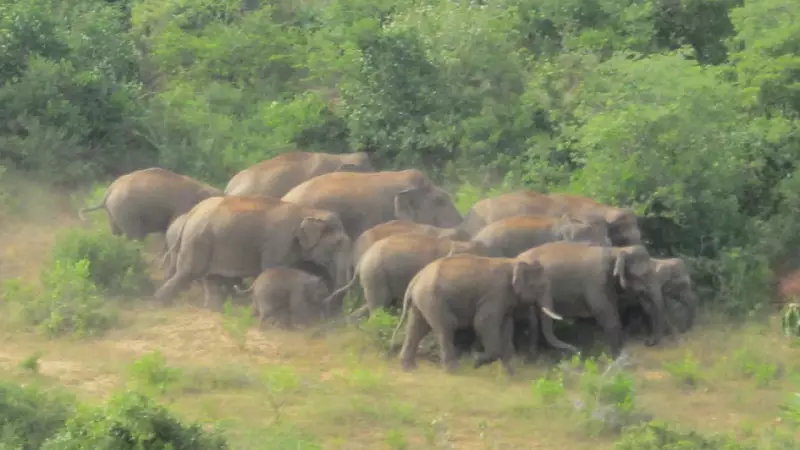
The Annual Migration That Terrifies Krishnagiri Farmers
For agricultural communities in the Hosur region of Krishnagiri district, four months each year bring genuine fear for both lives and livelihoods. The period spanning April, May, October, and November marks the scary season when more than 200 elephants undertake their massive annual migration through this Tamil Nadu corridor.
Deadly Pattern Repeats Twice Yearly
Every October and November, the elephant herds migrate from Karnataka's forests toward Andhra Pradesh's wilderness areas, passing directly through the Hosur forest division. The return journey occurs during April and May, with the same route being followed in reverse. This cyclical movement has created a persistent pattern of destruction and danger for local farming communities.
Farmers report that these migrating elephants have killed approximately 20 people in the region over the past two years alone. Since the current migration season began in October, two farmers have already lost their lives in the Hosur region, with extensive damage to agricultural crops compounding the tragedy.
Crop Destruction and Economic Impact
The elephants have caused significant damage to paddy, sugarcane, and other standing crops during their transit, leading to escalated human-elephant conflicts. According to M Srinivasan, a farmer from Denkanikottai, the migration follows a specific corridor: "Each year in October and November, the elephants from Karnataka's Bannerghatta National Park and Kaveri Wildlife Sanctuary travel through the Hosur forest range in Tamil Nadu."
The route includes Jawalagiri and forests in Denkanikottai, Noganur, Sanamavu, Chettipalli, and Maharajakadai. The elephants ultimately reach Kaundinya Wildlife Sanctuary and Sri Venkateswara Sanctuary in Andhra Pradesh before returning to Karnataka forests during the spring months.
Srinivasan made an important distinction about the elephant population: Around 20 elephants reside permanently in the Hosur forest reserve, and these usually don't damage crops. The extensive crop damage is primarily caused by the migrating elephants.
Farmer Response and Preventive Measures
The consistent elephant migration has made year-round cultivation nearly impossible for many farmers. In recent years, numerous agriculturalists have avoided cultivation entirely during the migration seasons to prevent losses.
Farmers have repeatedly requested that the forest department erect iron-wire fences along the elephant migration route from Jawalagiri forest area to Denkanikottai forest area, but no substantial action has been taken according to local accounts.
The situation has become so dire that many residents who had built huts on agricultural land have relocated to nearby villages for safety. Farmers continue to urge the forest department to deploy additional personnel to protect both human lives and agricultural land during these critical migratory periods.
Forest department officials report implementing several preventive measures, including growing grass and bamboo along the migration route to discourage elephants from entering agricultural fields. The department has also erected some wire fences, with officials claiming these measures reduced crop damage last year.
An official explained additional efforts: "Now, we have created ponds and cultivated grass along the migration route. Farmers adjacent to the forest area should take advice from horticulture and forest departments before cultivating."
Despite these efforts, the fundamental challenge remains unresolved, leaving Krishnagiri farmers facing the same life-threatening situation twice every year as hundreds of elephants continue their ancient migratory patterns through human-dominated landscapes.





